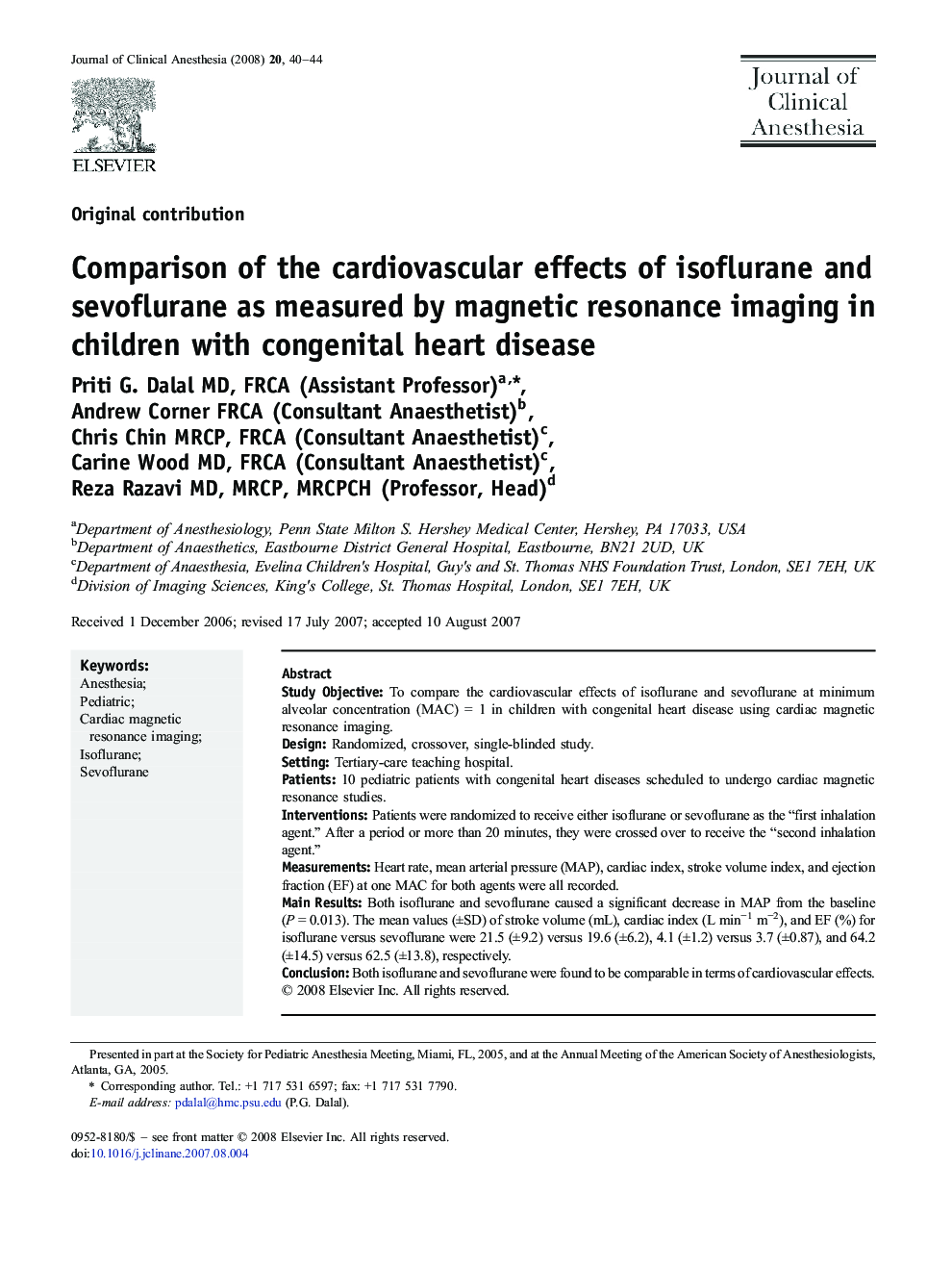| Article ID | Journal | Published Year | Pages | File Type |
|---|---|---|---|---|
| 2763632 | Journal of Clinical Anesthesia | 2008 | 5 Pages |
Study ObjectiveTo compare the cardiovascular effects of isoflurane and sevoflurane at minimum alveolar concentration (MAC) = 1 in children with congenital heart disease using cardiac magnetic resonance imaging.DesignRandomized, crossover, single-blinded study.SettingTertiary-care teaching hospital.Patients10 pediatric patients with congenital heart diseases scheduled to undergo cardiac magnetic resonance studies.InterventionsPatients were randomized to receive either isoflurane or sevoflurane as the “first inhalation agent.” After a period or more than 20 minutes, they were crossed over to receive the “second inhalation agent.”MeasurementsHeart rate, mean arterial pressure (MAP), cardiac index, stroke volume index, and ejection fraction (EF) at one MAC for both agents were all recorded.Main ResultsBoth isoflurane and sevoflurane caused a significant decrease in MAP from the baseline (P = 0.013). The mean values (±SD) of stroke volume (mL), cardiac index (L min−1 m−2), and EF (%) for isoflurane versus sevoflurane were 21.5 (±9.2) versus 19.6 (±6.2), 4.1 (±1.2) versus 3.7 (±0.87), and 64.2 (±14.5) versus 62.5 (±13.8), respectively.ConclusionBoth isoflurane and sevoflurane were found to be comparable in terms of cardiovascular effects.
